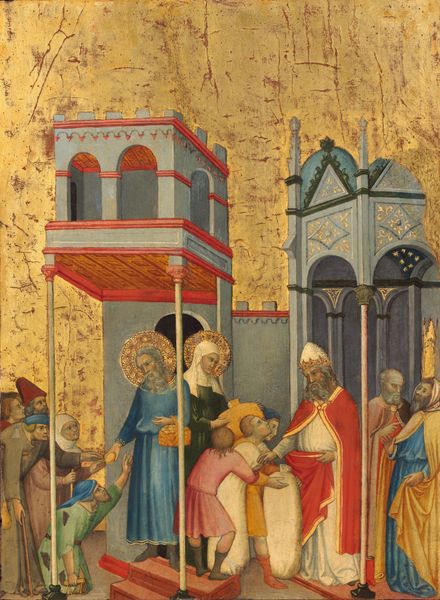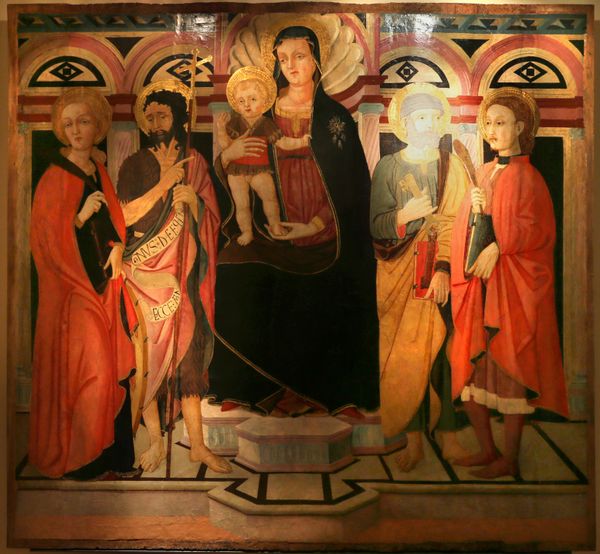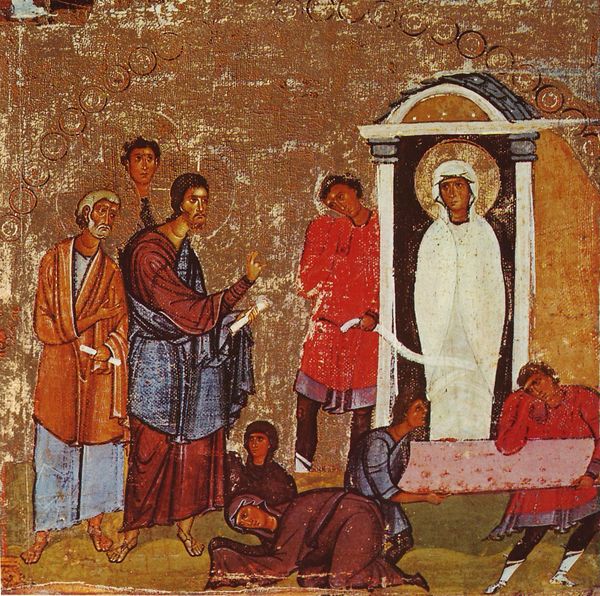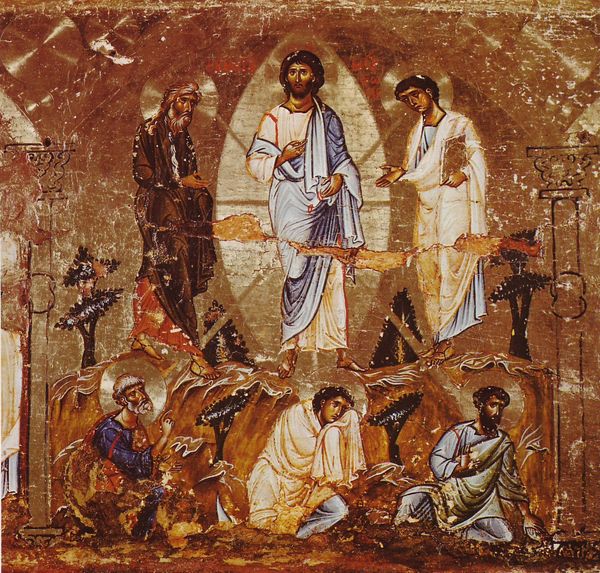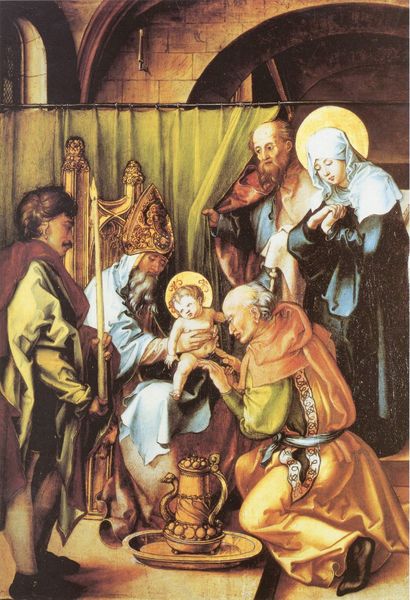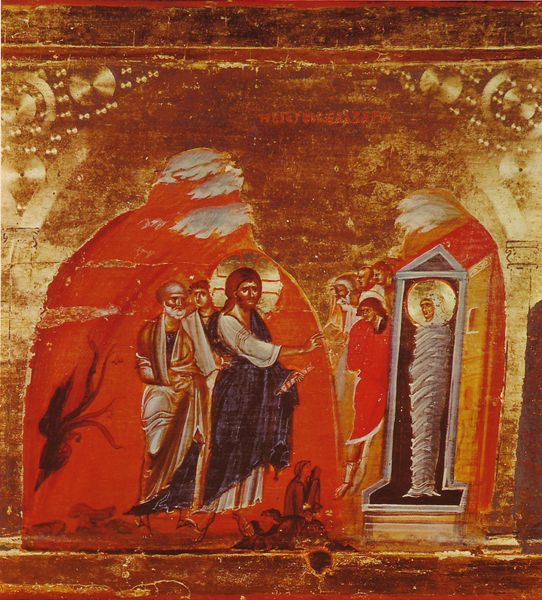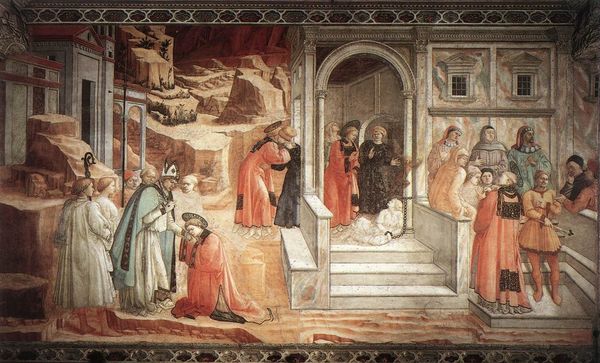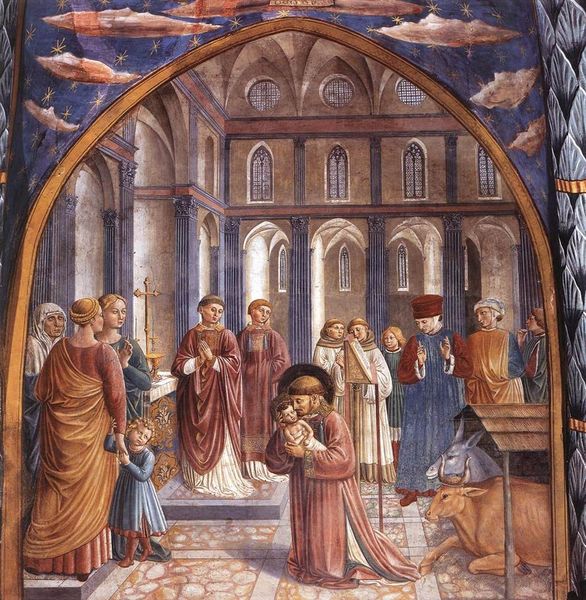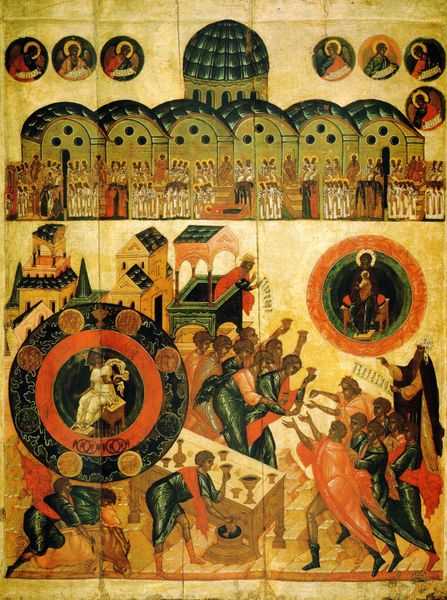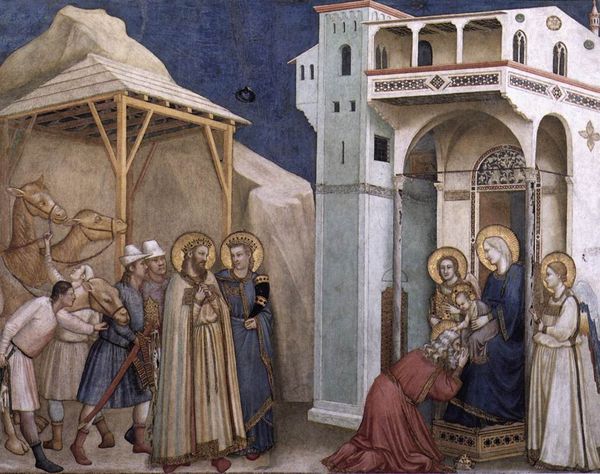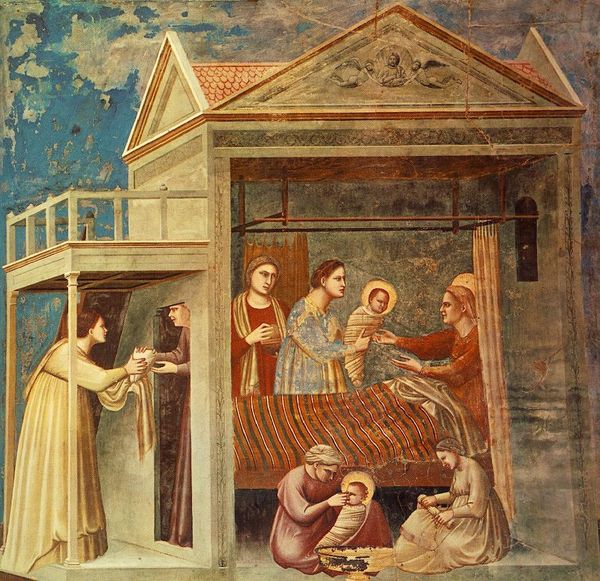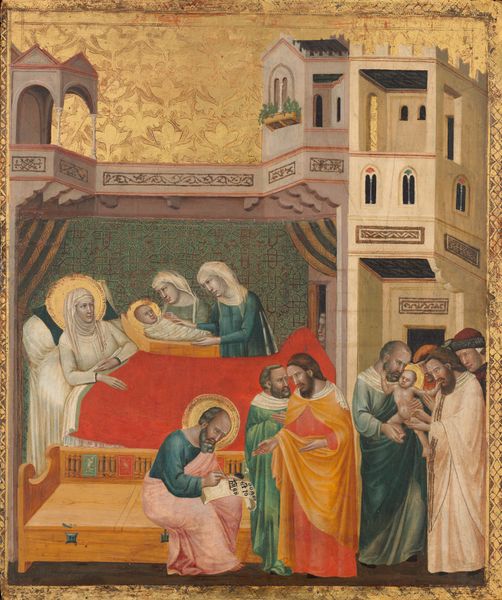
Saint Eustratius Healing a Possessed Man 1150
0:00
0:00
orthodoxicons
Saint Catherine's Monastery, Mount Sinai, Egypt
tempera, painting
#
byzantine-art
#
medieval
#
narrative-art
#
tempera
#
painting
#
figuration
#
oil painting
#
history-painting
Copyright: Orthodox Icons,Fair Use
Editor: So, this tempera on panel artwork is titled *Saint Eustratius Healing a Possessed Man*, and it dates back to 1150. The artist, as far as we know, is unknown, and it's currently located at Saint Catherine's Monastery. It looks really tense, but with a glimmer of hope. The lines feel static, almost like everyone's holding their breath. What stands out to you in this piece? Curator: Ah, yes, it's as if a story is paused, begging to be unraveled. What grips me most is the economy of expression. Byzantine art, you see, it wasn't about photographic reality. It's a realm of symbolism. Eustratius' elongated fingers, like extensions of his spirit, reaching out. The architectural backdrop—is it real? Is it imagined? It's both! What do you make of the contrast between the saint’s controlled posture and the possessed man's contorted body? Editor: I see what you mean. The saint seems so composed, a pillar of faith. And that man, yikes, the way he's bent over… it’s a stark difference! Is that the point, do you think? To show the power of faith against turmoil? Curator: Precisely! It’s a dance between divine grace and human suffering. Those watchful figures in the background, peeking from the building-- they add an element of silent witness, don’t they? I always wonder, what's *their* story? Editor: True! They definitely add a layer of voyeurism to the piece. It's as if we, too, are witnessing a miracle. Thanks, I see this in a whole new light now. Curator: Art, darling, it's a never-ending conversation, a mirror reflecting our own souls. Keep those eyes and mind wide open!
Comments
No comments
Be the first to comment and join the conversation on the ultimate creative platform.
